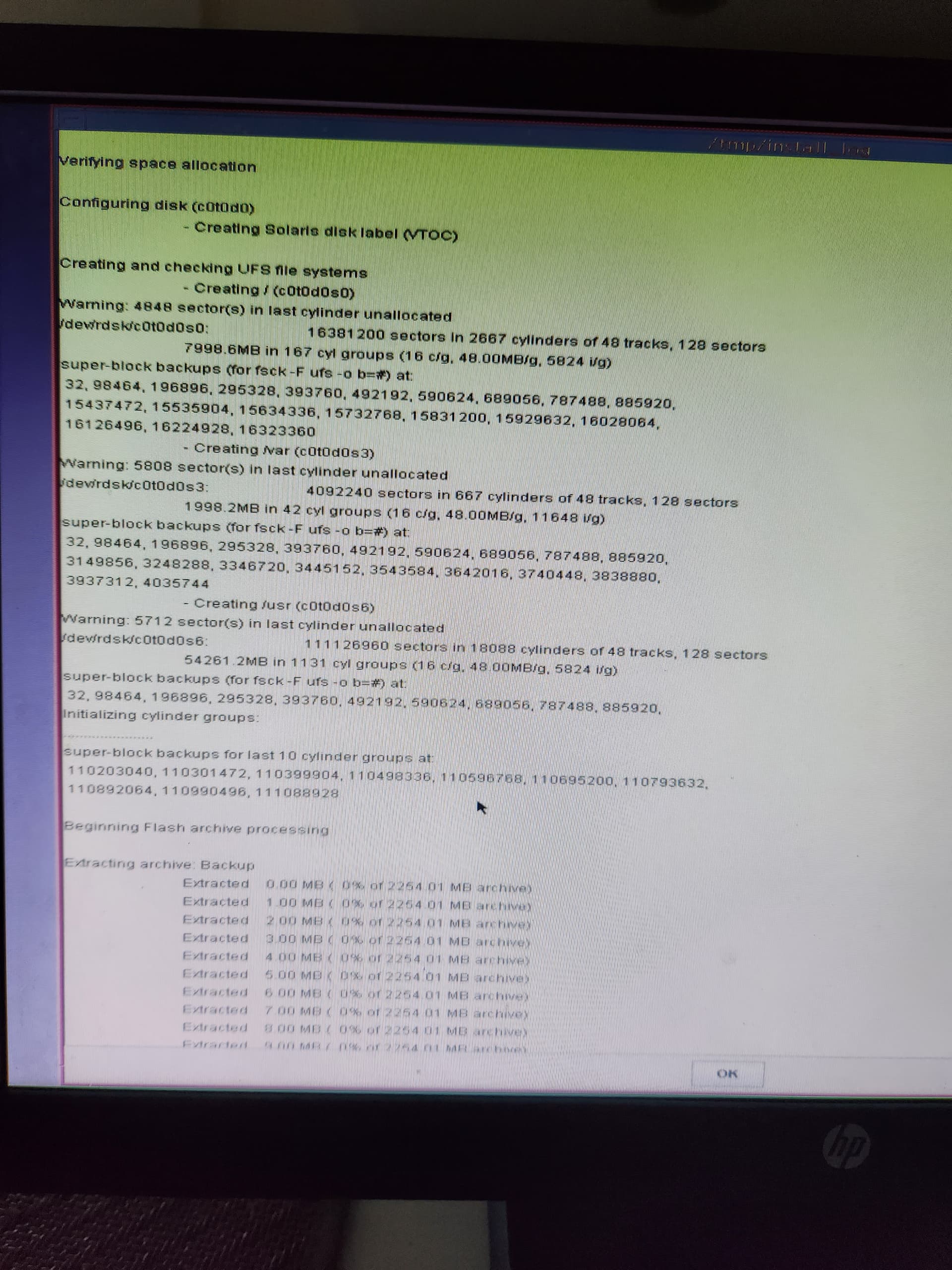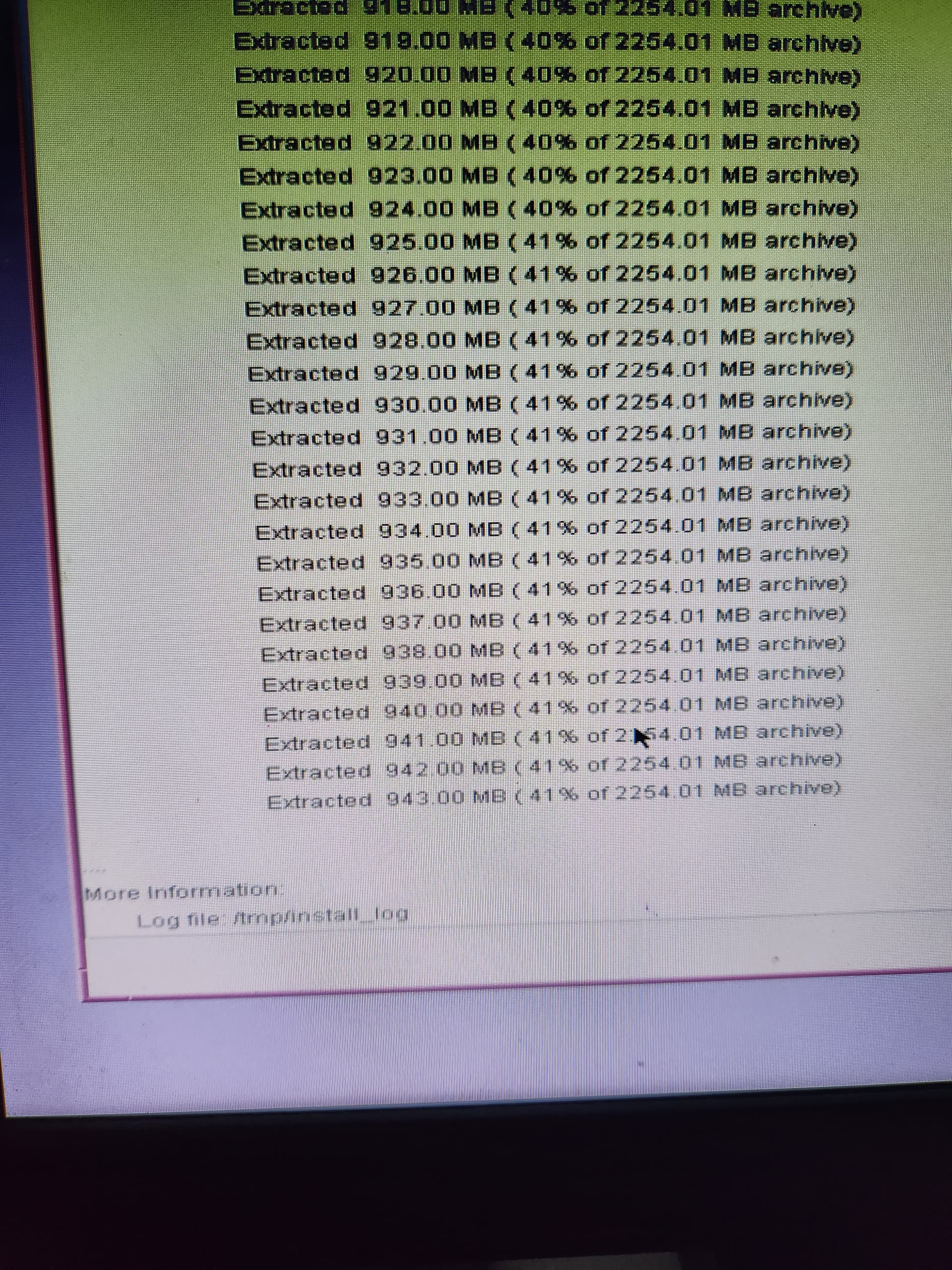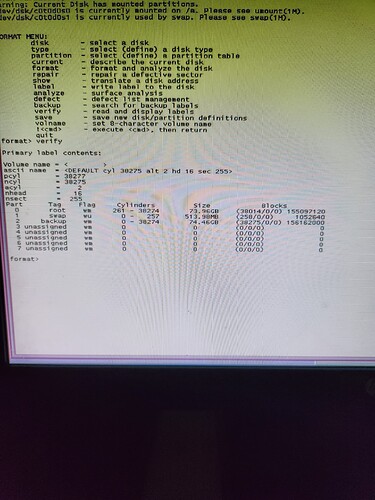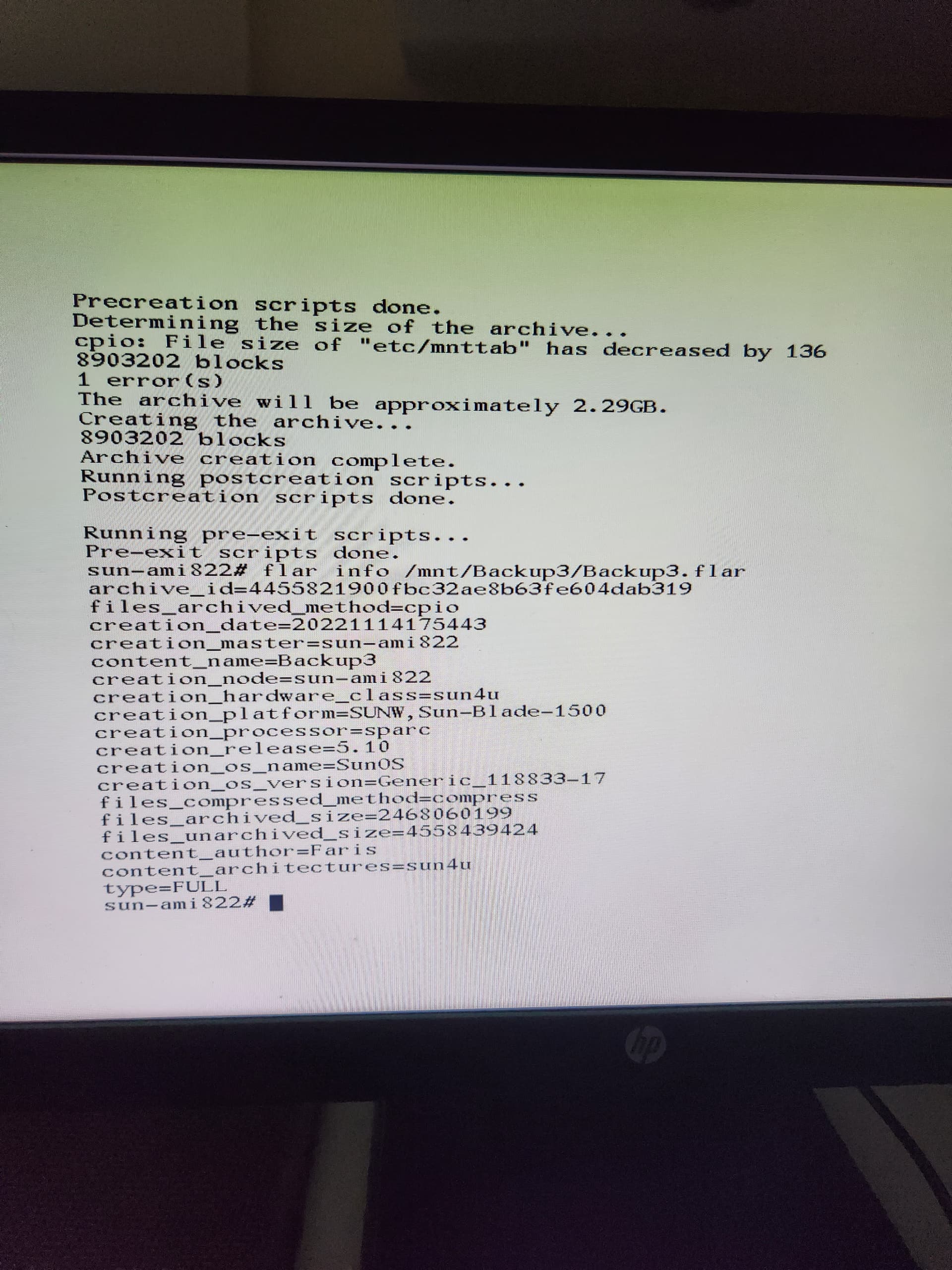Having followed your issue from the beginning the first thing I must recommend is that you do NOT delete the flash archives you have. There is no reason to think that they are faulty (see below for comment on that) and they will be a life saver is disaster strikes your good system.
I have a feeling that this post might turn out to be a long one, perhaps not, but I would comment as follows. Here goes!!
Firstly, famous last words, this shouldn't be happening. What questions is the flash install process asking you exactly? You are not opting to "preserve" anything on the hard drive from what you say, but is there another question tripping you up I wonder? Please post the questions you are answering if this continues.
A flash install should mimic the VTOC from the original machine BUT the bad machine drive is several cylinders smaller than the good machine. Good machine 38307 cyl, bad machine 38275 cyl, so the install process has no chance of duplicating that VTOC. Slices (partitions in Microsoft speak) must start and end on a cylinder boundary so are therefore specified with the start cylinder and end cylinder numbers. NO OVERLAPS allowed, of course.
Now looking at your screenshots of the good disk and bad disk VTOCs, it is immediately apparent that the good disk has filesystems /root, /var and /usr in addition to, of course, a defined swap space. The bad disk has the whole drive (apart from swap, etc) defined as root filesystem. So it's no surprise to me that when the flash install is extracting the filesystems and gets to /var and /usr it has nowhere to restore the data to and so will likely crash. The question is why the flash install hasn't configured /var and /usr and, if it couldn't do that, why it didn't crash much earlier in the process.
Integrity of the flash archive
This can be tested by using the 'flar split' command (see the man page) to split the flash archive into its component parts. You must specify the target directory where you want these components dumped. It won't delete the original archive. The largest of the files produced will be the cpio archive of the whole system (which, if you learn to use cpio, you could list out the contents of that to see what files you have and whether it looks like the whole system or not). If the flar split completes without an error and produces the components in the target directory, then I would say that the flash archive is fine.
Incidentally, I would comment from your post that you should not be using any -y includes on your command line; the archive should just take the whole system anyway. the common use of -y is when you've used a -n to exclude a high level directory but want to -y include one of its sub-directories. You shouldn't need any such switches on your command line.
You might also consider looking at the command 'fmthard' that will export a VTOC configuration in order to import that identical VTOC onto an empty drive. You could export the good system VTOC to a file, and then try importing that into the bad machine. The question is how to get the file across between the boxes. Anyway though, there's the question of the cylinder count that I've already mentioned.
You could use 'format' (in single user) to set the VTOC on the bad machine as near as damit to the original by editing the slices with the same cylinder start/end numbers for /root, /var and /usr, and also swap space, etc. Remember that you then must write 'w' that VTOC to the drive otherwise all your edits will be lost. Re-enter 'format' and check your edits have been written. Then you use the command 'newfs' to create new empty filesystems on the slices with /root, /var and /usr. Do not write new filesystems anywhere else; not needed.
CRITICAL NOTE: When editing VTOCs NEVER edit slice 2 (s2 backup slice) because this always represents the whole disk and the system depends on it to determine disk geometry.
If you get that far then you could mount /root, mount the /var slice on /var, mount the /usr slice on /usr, change directory to the top of the hard disk root filesystem, and then restore the cpio archive produced by flar split handraulically. However, I understand that you are new to Solaris so might well have to ask questions about this approach.
In summary, I think the cylinder count of the two disks might be the problem why flash extract is falling over, along with the VTOC having no /var or /usr specified.
Hope that helps a little.







